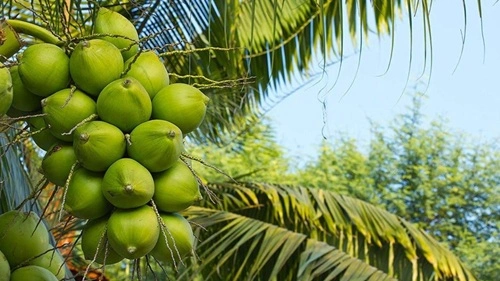Coconut is one of the most crucial plantation crops in India that plays a huge role in the economy of many coastal states. Coconut not only offers food and oil, but it has also been used in multiple industries for fibre, and people love it for tender coconut water. Every part of the coconut is useful, on which millions of farmers depend.
Coconut production also plays a vital role in the livelihood of farmers and their related industries like Copra, Coir, and Coconut oil. Thousands of jobs depend upon this single crop. Due to all this, the coconut production continues to grow as per the Coconut Development Board (Ministry of Agriculture). The increase in production became possible through new technology, better farming methods, and incentives through localized schemes to benefit farmers.
Many states in India contribute to the massive production number; some states have higher contributions, whereas some have just begun to contribute. Here, we will learn about the top 5 largest coconut-producing states in India in 2025.

1. Karnataka – About 6,151 Million Nuts
Karnataka leads when it comes to the largest coconut-producing states in India, and it has surpassed Kerala in coconut production numbers. The production of coconut was about 6,151 million nuts in 2024-2025, as per the coconut development board data. Around 7 lakh hectares of coconut land are under cultivation across districts like Tumakuru, Chikkamagaluru, and Dakshina Kannada.
The credit for the increased production numbers in Karnataka is linked to farmer-friendly policies, improved irrigation systems, and high-yielding hybrid varieties of coconut.
2. Tamil Nadu – About 6,091 Million Nuts
Tamil Nadu is the second-largest coconut producer with production numbers close to those of Karnataka. Tamil Nadu coconut production is estimated to be around 6,050 to 6,091 million nuts. There are about 4.9 lakh hectares of land area under cultivation, where the major coconut growing belts are in Coimbatore, Thanjavur, Pollachi, and Tiruppur.
Tamil Nadu’s farmers benefit from well-developed irrigation, organized marketing channels, and long experience in coconut farming. The state is known for its large number of processing industries that convert coconuts into desiccated coconut, coconut milk, and other high-value products.
3. Kerala – About 5,522 Million Nuts
Kerala used to lead in coconut production as compared to any other state, but it now holds third position with 5,522 million nuts in 2024-25. The historical change in Kerala’s ranking came after other states started promoting coconut production with better policies than Kerala.
However, Kerala is still standing strong through 7.6 lakh hectare land area under cultivation, which is the largest cultivation area in India. As most of us know, culture and cuisine of Kerala is deeply connected with coconuts, and products like coconut oil, copra, and coir. Due to this, coconut is integral to daily life and trade.
4. Andhra Pradesh – About 1,707 Million Nuts
A state that has shown steady growth toward being a top coconut-producing state is none other than Andhra Pradesh. With 1,707 million nuts in 2024-25, Andhra Pradesh has increased coconut cultivation over the years. Andhra Pradesh contributes about 7-8% to the total national coconut output.
There are about 1 lakh hectares of land area under cultivation, with key districts being East Godavari, Krishna, and Visakhapatnam. Its coastal districts benefit from fertile soils and a warm, humid climate. Farmers in Andhra Pradesh have adopted improved planting techniques, high-yielding varieties, and better irrigation practices.
5. West Bengal – About 421 Million Nuts
West Bengal takes the fifth position among India’s top coconut-producing states with steady improvement in its share of total national production. Over the years, West Bengal has increased its share to about 421 million nuts with a land area of around 40,000 hectares under cultivation.
The key districts that dominate in West Bengal’s coconut production are South 24 Parganas, Howrah, and Midnapore. Despite being less famous for coconuts compared to southern states, West Bengal benefits from a warm and humid coastal climate suitable for coconut palms.
Bottom Line
India’s coconut sector is expanding, and the new incentive-driven policies for farmers will likely help in increasing production numbers to new highs. The use of new technology, better varieties, and growing domestic and export demands is likely to help farmers get better yields.